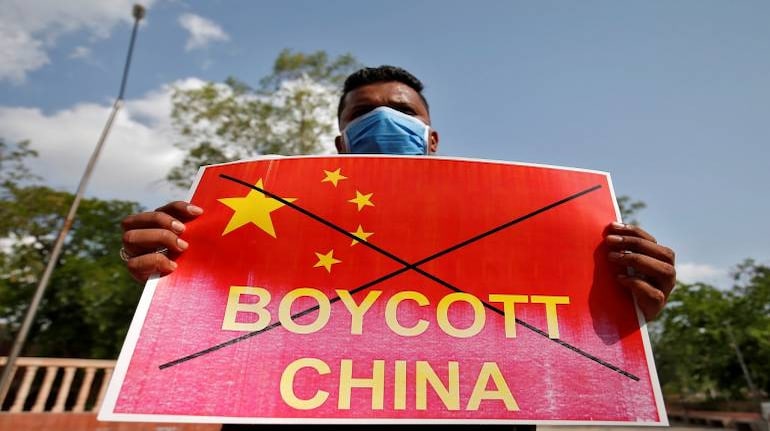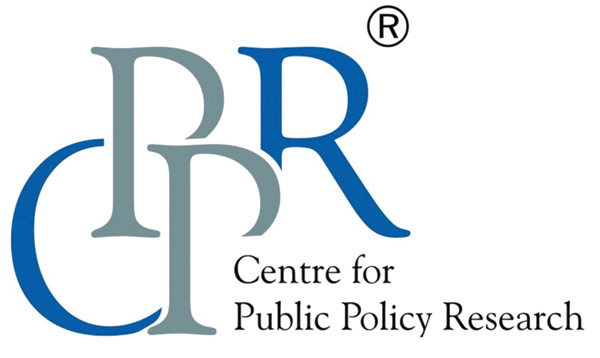Articles

IC4 awaits data from government departments & agencies
June 26, 2020
അർദ്ധ-സാർവത്രിക അടിസ്ഥാന വരുമാനത്തിന്റെ ആവശ്യകത
June 26, 2020A hawkish opposition to Chinese imports is ill-founded

Nissy Solomon and Gazi Hassan
The ongoing political tension between India and China is transcending into an economic clash.
While the Indian defence is busy handling the territorial borders, various agencies believe that boycotting Chinese goods would be one of the best ways to curb Chinese dominance. The Confederation of All India Traders (CAIT) has called to boycott Chinese goods by substituting it with indigenously produced goods. India is also mulling tough economic measures to limit China’s market access to India. However, this move has invited criticism owing to the current national capabilities, and the strong dependency of the world on Chinese goods.
As per the data released by the Department of Commerce, India’s import of Chinese goods accounted for 13.68 percent in 2018–19. The latest figure (April 2019 – February 2020) stands at 14.08 percent. The figure is higher by 3.5 percent if we consider India’s trade with Hong Kong.
On the other hand, India’s export to China stood at 5.08 percent in 2018–19. For the months from April 2019 to February 2020, this share rose to 5.3 percent. Notably, China’s exports to India account for only 2 percent of the total Chinese exports. Seen against this backdrop, the impact of the boycott on the Chinese economy is insignificant; while for India, it means a losing game.
Some of the vital sectors of the Indian economy are deeply entrenched in Chinese goods. This integration with China’s supply chain is apparent even in the export segment. India’s top export products include automobiles, electronics and pharmaceutical products. China provides crucial intermediary components to these domestic manufacturing units.
For instance, in the Active Pharmaceutical Ingredients, India’s market size is $2 billion and the share of Chinese products constitutes approximately 60 percent. Any restrictive measures placed on China will be a major impediment to our exports and global competitiveness.
One of the reasons why China could succeed in cementing its presence in India is because it could tap the price-sensitive characteristics of the Indian market. The bilateral trade and investment with China have been a positive sum game. It has given price-conscious consumers more purchasing power parity; it has accorded capital-starved Indian startups a much-needed financial impetus, and created employment opportunities through investments.
This points to some of the fundamental challenges that India faces today, such as inadequate capital, lack of investment funds, credit and ease of doing business. China’s dominance in the Indian economy is only reflective of India’s failure in creating opportunities. The ongoing political mayhem, which is fast translating into a trade war, discounts these benefits, inadvertently creating a class privilege only the affluent few can exercise.
The Indian public’s response is largely emotional and barely logical. At a time when India requires an immediate boost to revive the manufacturing sector, any economic measure against China will substantially disrupt supply chains and thwart the domestic economy.
While India’s motive to limit import-dependency and boost manufacturing is well-intended, the measures being mooted around protectionism may be counter-productive.
There are two ways in which India can reduce dependency. One, identify an alternate cost-effective source to plug its demand for essential materials; and two, boost India’s domestic capabilities. Both the scenarios, in the immediate term, are delusional.
China is synonymous to cost-effectiveness. Low-cost alternates are minimal and boosting domestic manufacturing capabilities is not an overnight operation. In fact, India’s manufacturing sector has failed to take-off despite the flagship campaign of ‘Make in India’ launched in 2014. This failure is also reflected in the changing export composition of India. Between 2011–2016, India lost its market share in 61 products, where it once held global competence. India ceded its market to regional competitors such as Vietnam, Bangladesh, Cambodia, in the garments and gems and jewellery sector.
Many reasons contributed to the downfall of these industries that showed traditional prowess erstwhile. The external factors include regional competitors offering favourable conditions. However, India losing its share to smaller nations has more to do with internal barriers.
Protectionism existing in India on key industrial raw materials has shut sourcing options for domestic industries, making the final goods expensive and uncompetitive in the global market.While the objective of protectionism is to further ‘Make in India’, it is not composed to help domestic firms to make export-oriented production.
Protectionism, by default, prompts uncertainty in the business ecosystem and repels investors. In the wake of geopolitical tension and the subsequent economic measures mooted, India will only lose its position as China’s alternative to a manufacturing base, by averting investors looking to diversify investments. The solution lies, not in protecting domestic firms from competition, but in equipping them to be competitive.
Other factors underlying this sluggishness in the manufacturing sector include inadequate infrastructure, lack of R&D, restrictive labour and land laws. The combined effects of these factors restrict India’s competitiveness on a global scale. We need policies that would spur innovation in trade in order to build the right ecosystem to strengthen our foothold in the global value chains.
Trade should not operate on isolationist policies. It is of mutual interest to leverage the comparative advantage offered by the two countries. India needs to undertake long-term measures to awaken the animal spirit in entrepreneurial innovation. The way out is not a complete boycott, but adoption of strategic alternatives such as diversifying import portfolios and creating the right institutional support enabling an open and technologically-innovative ecosystem.
This article was published in Money Control on June, 2020. Click here to read
Nissy Solomon and Gazi Hassan are Senior Research Associates at Centre for Public Policy Research, Kochi. Views expressed are personal and need not reflect or represent the views of Centre for Public Policy Research.

